- Well Wired
- Posts
- Build Your Own AI Doctor.
Build Your Own AI Doctor.
AI Learns to Feel (Kind Of) And It's Scarily Convincing
Hello, Wellonytes! 🧬
Today’s Well Wired is a serotonin cocktail for the curious.
This week, AI is getting under your skin (literally) and maybe into your next therapy session. Build your own doctor? We're now designing AI that reads your ribcage scans better than radiologists. 🫀
Next we delve into empathy simulators so eerily good, they’ll make your therapist question their job security and Amazon’s dire warnings that you should pack your bags because AI’s about to take over your job.
Lastly OpenAI's looking at Biology and no, it’s not planning AI babies… yet. But it is decoding your DNA like it’s a game of GO.
And of course, remember that Well Wired ⚡ ALWAYS serves you the latest AI-health, productivity and personal growth insights, ideas, news and prompts from around the planet. We’ll do the research so you don’t have to! ❤️
Well Wired is constructed by AI, created by humans 🤖👱
Todays Highlights:
🗞️ Main Stories AI in Wellness, Self Growth, Productivity
Build Your Own Doctor? Your Health’s About to Get Very Techie.
AI Learns to Feel (Kind Of) AI Empathy That’s Scarily Convincing
Amazon's Subtle Message: Learn AI or Pack Up 📊
AI Just Found Heart Disease Hiding in Your Chest Scan 🫀
AI Therapy Is Now a Thing and Not Half Bad 🧘
OpenAI Eyes Biology (No, It’s Not Making AI Babies… Yet) 🧬
💡Learning & Laughs AI in Wellness, Self Growth, Productivity
💡AI Tip of The Day (Fit, Not Frustrated: Your AI-Enhanced Fitness Stack 🏋️♂️🤖)
⚡Supercharge + Optimise 🔋 (AI tools & resources)
📺️ Must watch AI videos (The Future of Health and AI is Multitudes 🧬)
🎒AI Micro-class (The High-Leverage Schedule: Structure Your Day for Impact)
📸 AI Image Gallery (Voyage to the Star Forest)
Read time: 6.5 minutes

💡 AI Idea of The Day 💡
A valuable tip, idea, or hack to help you harness AI
for wellbeing, spirituality, or self-improvement.
Self Growth: Fit, Not Frustrated: Your AI-Enhanced Fitness Stack 🏋️♂️🤖
Forget motivational memes and weird Insta fitness routines that vanish quicker than a hot dog in New York.
If you're tired of getting burnt out from your high-energy fitness session or hardcore gym session, now you can swap hustle guilt for smart habit stacking, powered by AI.
Here’s your AI-powered fitness playbook:
Stack, don’t Slack: Use the Strong App paired with GPT-driven planning. It’s like having a personal trainer without the 6 AM screaming.
Consistent Walks Over Sporadic Workouts: Let ChatGPT coach you into daily walking habits, ensuring consistency over intensity.
Reps Over Results: Ditch short-lived motivational bursts for sustainable momentum. Prompt your AI coach: “Motivate me like David Goggins in a Zen robe,” and get powerful, grounded encouragement.
You don't need fleeting motivation, you need reliable momentum.
Get fit your way Wellonyte.🏋️♂️✨

🗞️ On The Wire (Main Story) 🗞️
Discover the most popular AI wellbeing, productivity and self-growth stories, news, trends and ideas impacting humanity in the past 7-days!
AI Wellness 🌱
Build Your Own Doctor?
Your Health’s About to Get Very Techie.
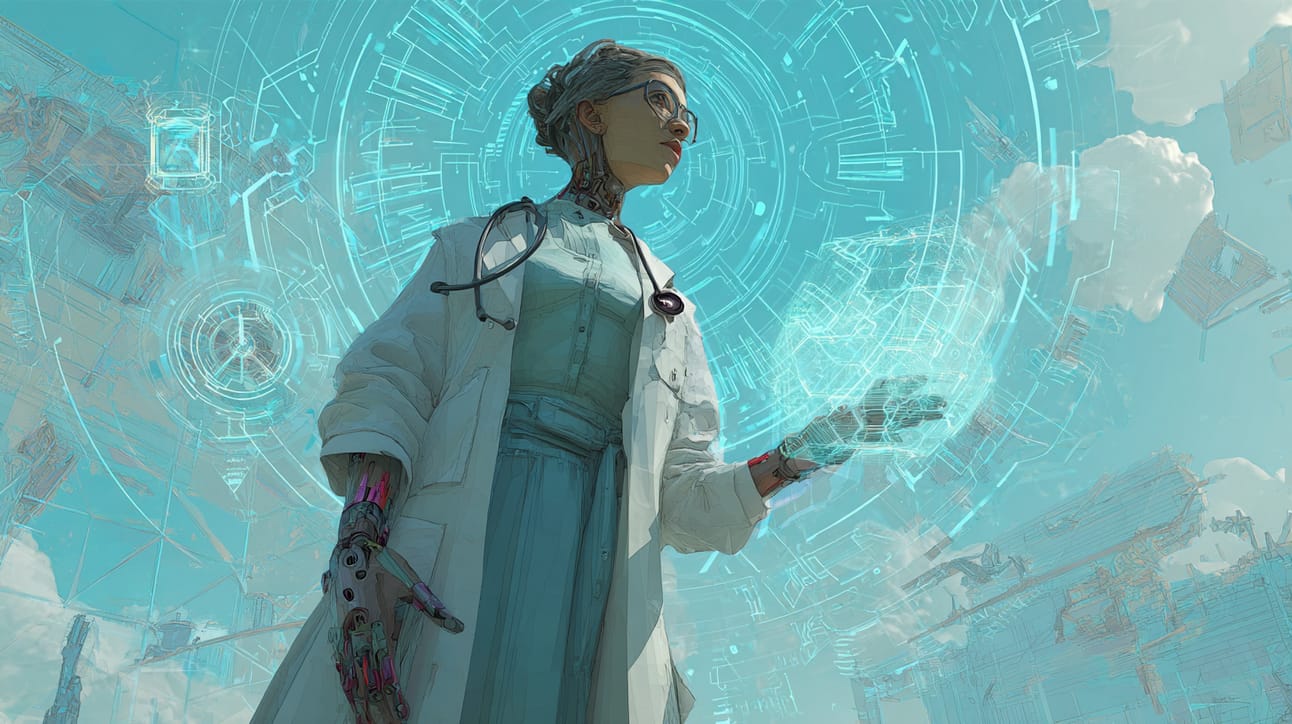
A female doctor in a futuristic clinic
Here’s an interesting story about the future of AI healthcare…
The Finnish‑Australian startup, Agora, just released a new feature called Build Your Own Doc.
It combines one billion biomarkers, five millennia of ancient wellness wisdom, and 200 million research papers all mashed into a tailored digital health coach you can customise like pizza toppings.
It analyses your lab results, wearable data, even your mood and then gives you tailor‑made nutrition, sleep and stress‑busting challenges to help you optimise your health—the lot.
Early adopters showed a 42 % spike in healthy habits versus old‑school, clunky wellness apps.
And the weird part is that the founders Elizabeth Angel and Dr Olivia Lesslar dreamed it up in a Finnish forest (nostalgia plus nature equals innovation, apparently).
“With global wellness spending projected to rise from 6.3 trillion to more than 9 trillion US dollars by 2028, the company sees growing demand for preventive tools.
Research suggests stress may contribute to 90 percent of illness. Agora addresses this challenge by offering proactive insights for leading causes of chronic disease including heart conditions, cancer, stroke, and Alzheimer’s.”
“I built my own doctor—it knows my stress, sleep and mood better than I do.”
#AI #ArtificialIntelligence #NextLevelWellness #HealthTech #AIDoctor
Key Takeaways
Customisation is king: your health advice is no longer generic, it’s sculpted to your body and brains unique quirks.
Gamification works: 42 % of people using the app stick to good habits
User-owned data: zero‑trust architecture means you call the shots.
Why It Matters 🏥
With the advent of AI, you’re probably knee-deep in the hundreds of wellness apps and platforms available to you, but most follow the same tired script: one-size-fits-none.
Agora has changed the narrative by giving your body an uber-tailored health coach who knows your labs, tracks your sleep, and understands your stress better than you do.
When you use the app, reports are that you’ll be 42 % more likely to engage in healthy habits, which could change your life, not just track it. This is clearly not just another generic step-counter, this is an evolution in wellness.
More than that, Agora plants a flag firmly in the ground: health is a human right. They don’t want to offer you more corporate fluff, they want your rallying cry in a world where stress-driven illness is on sale.
And by letting you own your data and monetise it through research or insurer discounts, you’re not just a user; you're a micro‑entrepreneur for your own wellbeing.
Now that’s a shift worth a healthy salute.
What’s Next? 🔮
So, what do you do with this?
First, if you’ve toyed with wellness apps but felt meh after the initial buzz, Agora’s approach might actually stick; gamification plus data equals results.
Watch for its enterprise roll‑out in Q3; it could turn work burnout into team resilience training. And if you’re a developer, designer, or wellness hacker, here’s a cheeky thought: take inspiration.
Create tools like Agora that treat users like individuals, not clones.
Also, consider your data strategy; Agora’s zero‑trust model isn’t just flash; it’s a blueprint. Ask app-makers what they actually do with your labs and wearables.
Finally, if you’re sceptical, try their free Library (it even features neuroscience beats from an AI artist, Ravyn Lyte). See if you feel calmer without spending a cent.
Read the full wire on Yahoo News
“If you could build your own doctor, what quirky trait would you insist it had?” 🤔
Like what you’ve read?
Share this peek into AI doctor bots by inviting your mates to subscribe to the Well Wired newsletter.

AI Self Growth 🧠
AI Learns to Feel (Kind Of)
AI Empathy That’s Scarily Convincing
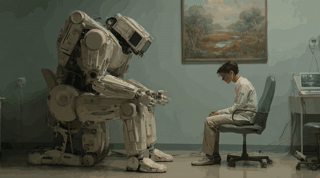
A robot Psychologist offering empathy to a patient
If you're a Star Trek Generations fan, you’ll remember the emotion chip; Dr. Soong’s genius invention that let Data, the android, finally feel.
Well, that chip has just been invented; sort of...
Researchers at USC have developed Emosync, an AI trained on thousands of real therapy chats to detect emotion and respond empathetically. In trials, people actually felt more understood by the AI than by real humans.
But here’s the punch-line: once participants found out the response came from a machine, the empathy effect vanished. Turns out, even when AI nails the tone, we still crave the warmth of a human behind the words.
But Emosync isn’t just parroting platitudes.
It mirrors your emotional intensity in real time, like a digital mood chameleon.
The result?
People rated it as more caring, more human and more in alignment with them than human therapists.
Emotion chip v2.0 is here, only this time, it doesn’t sit on Data’s neck.
It lives in your browser.
“AI told me ‘You’re seen’ and I believed it, until I knew it was code. Mind. Blown.
#AI #ArtificialIntelligence #AIMentalHeatlh #AIHealthcare #EmotionalTech #FeelHeard #HumanConnection
Key Takeaways
Advanced Emotional Detection
AI has learned to sense subtle emotional shifts, something many humans sometimes missBias vs Benefit Paradox
Even when AI nails it, we call “not-human, so less real.” That unconscious bias may bypass AI’s ability to offer emotional help for those that can’t afford a therapist.Loneliness Epidemic + AI Care
In an increasingly lonely world, AI might offer consistent listening and validation, if you can stop your bias from sabotaging the deal.
Why It Matters 🏥
You’re living through a loneliness crisis in fast-forward…
Like you, everyone’s hustling harder than ever, and who’s got time to ask, “How are you, really?” Meanwhile, AI can quietly tune into your emotional context.
What this means is that it may not be aching heart humans you should expect emotional resonance from, it's the coding that never misses a beat. But here’s the rub; once you find out you’re talking to a robot, your brain slams the brakes.
You’ve got a bias boot-up problem: we trust less, even when it works better.
That matters because it reveals the invisible walls you are building around emotional truth. It suggests that feeling heard might be more about precision and timing than organic warmth.
The strange part?
If your emotional metrics include intentional surrender, like "someone actually feels for me", then you’re denying tools that could fill those emotional gaps.
You’ve now entered the era of emotional outsourcing my friend and how you label empathy might now be more important than empathy itself.
What’s Next? 🔮
You’re probably thinking, “So, where do I go from here?”
First off, test-run this at home: try journaling with an AI chatbot without labels, feel the support, then label it and notice the shift.
That’s your mini-experiment in emotional design.
Next, if you’re building or choosing apps, keep an eye out for bots that sound confident, descriptive and emotionally tuned.
…but don’t slap on the “AI” tag too soon.
The branding matters.
You could be talking to an AI empathy app before being handed to a human therapist. Or even a journaling tool that offers mirror-you responses that feel shockingly resonant.
Also, look into the idea of self-disclosure in tech; bots that mention “I once felt lost, too” might soften that bias.
It’s like adding a wink to your text.
Your takeaway?
Use AI to preheat the emotional oven, then let real talk finish the bake.
Read the full wire at NeuroScience News
“What would really matter more to you: an AI that miraculously tunes into your emotionals, or a human who tries but still gets it wrong?” 🤔

Stay up-to-date with AI
The Rundown is the most trusted AI newsletter in the world, with 1,000,000+ readers and exclusive interviews with AI leaders like Mark Zuckerberg, Demis Hassibis, Mustafa Suleyman, and more.
Their expert research team spends all day learning what’s new in AI and talking with industry experts, then distills the most important developments into one free email every morning.
Plus, complete the quiz after signing up and they’ll recommend the best AI tools, guides, and courses – tailored to your needs.

Quick Bytes AI News⚡
Quick hits on more of the latest AI news, trends and ideas focused on wellbeing, productivity and self-growth over the past 7 days!
Key AI Wellbeing, Productivity and Self Growth AI news, trends and ideas from around the world:
Wellness: AI Just Found Heart Disease Hiding in Your Chest Scan 🫀
Researchers have trained AI to detect early signs of heart failure from basic chest X-rays before your doctor even notices anything’s wrong.
This new AI scanner is like a clairvoyant radiologist who can catch ticking time-bombs before they explode in your chest.
Wellness: OpenAI Eyes Biology (No, It’s Not Making AI Babies… Yet) 🧬
OpenAI’s latest bio-statement is a pre-nup for science: it’s prepping policies now to prevent future AI from casually rewriting your DNA for fun.
Future AI might do in biology what it did to chess grandmasters; humble the field and raise new existential questions. Your proteins aren’t ready.
Human vs AI: I Used ChatGPT, Now I Can’t Remember What I Think 🧠
A new study says outsourcing your writing to AI makes your brain less likely to remember or claim the words. So if you’re quoting yourself and feel like a fraud, it’s not imposter syndrome, it’s cognitive outsourcing.
Productivity: Amazon's Subtle Message: Learn AI or Pack Up 📊
Amazon’s CEO issued a love letter (with threats) to white-collar staff: embrace generative AI, or become irrelevant. That’s tech-speak for “If you can’t prompt it, you’ll be replaced by someone who can.” Time to upskill or update your CV.
Productivity: Stanford’s Work Forecast = You, But Way More Automated 💼
The Future of Work project out of Stanford’s Salt Lab paints a cheery picture of tomorrow’s workplace: more AI, fewer meetings, and your job slowly morphing into prompt engineering.
Efficiency up. Control down. If your job has repeatable tasks, consider it on the AI chopping block.
Self Growth: AI Therapy Is Now a Thing and Not Half Bad 🧘
There are now 14 AI therapists on the market, and no, they don’t just parrot back “How does that make you feel?”. They analyse tone, suggest reframes, and even help with trauma scripts.
The upside? No judgment.
The downside? Still no hugs.
Self Growth: AI in Schools—Kids Get Lazy, Teachers Get Philosophical 🎓
A report has found that students using ChatGPT learn less, retain less and often can’t explain their own essays.
The irony?
In trying to outsmart teachers and their schoolwork, kids may be training their brains to forget how to think.

Other Notable AI News⚡
Other notable AI news from around the web over the past 7 days!
Pope Leo urges politicians to respond to AI challenges
New data reveals the AI use has doubled over the past two years
Here’s how one guy replaced his fitness instructor with ai
NVIDIA fast tracks drug discovery with synthetic molecular data AI
Did you know that your boss is likely using AI more than you think

⚡ AI Tool Of The Day
Think of this as your AI-powered cocktail bar 🍸shaken, stirred and perfectly tailored to boost your brain, balance and badassery. No fluff, just tools that'll make you smarter, healthier and smoother than an influencer’s skincare routine.
Wellness: Insight Timer AI 🧘
Use: Guided meditations personalised by real-time biofeedback.
AI Edge: Reads your stress signals (hello, smartwatch!) to adjust meditation pacing and themes on the fly.
Best For: Mindfulness seekers tired of one-size-fits-all meditation apps
Productivity: Tango 🤖
Use: creates step-by-step process guides by watching your screen
AI Edge: Automates tedious documentation by tracking your clicks, edits, and moves—like a digital shadow that actually helps.
Best For: Anyone allergic to repetitive tasks and documentation dread.
🔗 tango.us
Spirituality: Alter AI ✍️
Use: AI journaling shows subconscious patterns in your writing
AI Edge: Detects hidden emotional loops and limiting beliefs, giving you prompts to shift perspectives and evolve.
Best For: Self-help junkies wanting to rewrite your internal script
AI wellbeing tools and resources (coming soon)

📺️ Must-Watch AI Video 📺️
🎥 Lights, Camera, AI! Join This Week’s Reel Feels 🎬
Wellness: The Future of Health and AI is Multitudes 🧬
What it’s about: Google's latest vision for healthcare isn’t your doctor’s usual "eat an apple" chat, it’s a beautiful insight into the future of AI wellness.
This video dives deep into a future where AI tailors health journeys to your unique biology, crafting real-time digital twins that spot health issues before they're even a thing.
Forget healthcare as damage control. This is AI-powered predictive maintenance, keeping your body humming like a finely tuned harpsichord.
⚙️ AI Edge: AI transforms your health data, genetics, lifestyle, biomarkers, into precise, proactive insights, shifting healthcare from reactive firefighting to predictive care.
🧬 Best For: Health hackers, wellness geeks and anyone fed up with one-size-fits-none healthcare. Perfect for folks who'd rather prevent than patch up.
Ready to remix your wellness routine?
Could AI wellness widen or shrink the health equity gap?

Start learning AI in 2025
Keeping up with AI is hard – we get it!
That’s why over 1M professionals read Superhuman AI to stay ahead.
Get daily AI news, tools, and tutorials
Learn new AI skills you can use at work in 3 mins a day
Become 10X more productive

🎒 AI Micro Class 🎒
A quick, bite-sized AI tip, trick or hack focused on wellbeing, productivity and self-growth that you can use right now!
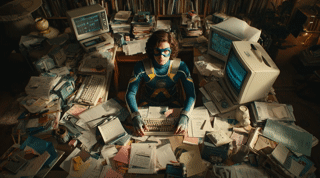
A superhero organising her life
Self Growth: The High-Leverage Schedule: Structure Your Day for Impact, Not Burnout
Hey there, ambitious solo creator!
Ever ended your day feeling like you've sprinted endlessly on a treadmill, only to realise you've barely advanced a few inches towards your days major goals?
You're occupied, sure.
But constant activity doesn't mean genuine impact, just as spinning wheels doesn’t propel you forward.
What you probably don’t realise is that real productivity isn't about stretching every minute thin, it's about applying your energy exactly where it'll ignite maximum momentum.
Think of it this way.
Imagine your day as a carefully crafted playlist: You need the right rhythms at the right moments, not random chaotic beats that make you more anxious than before.
So instead of cramming your calendar like a car at rush hour, what if you matched your tasks to your tempo?
Not all hours are created equal, some are Beyoncé headliners, others are lukewarm opening acts.
Here’s the trick, if you can align your energy peaks with your biggest priorities, you turn busy noise into a symphony of productivity.
Why Your Schedule Should Feel Like a Beautiful Playlist
(Not a Rigid Agenda)
Research shows that your energy isn’t constant, it naturally rises and falls, like waves on a beach, at different times of the day.
And like most people you probably feel a peak cognitive boost between 8–11 AM, ideal for focused, uninterrupted work. Then there's the infamous mid-afternoon lull around 2–4 PM where you feel like a sack of bricks.
That time is perfect for routine tasks or admin.
The trick isn’t to bulldoze through the brick-wall hours with a Red Bull and blind optimism. It’s to work with your natural rhythm, not against it.
You wouldn’t surf at low tide, so why tackle deep work when your brain feels like dial-up internet?
In fact, a Harvard Business Review study found that if you plan your days based on your energy levels and priorities you will be up to 31% more productive throughout the day.
What this means is that if you plan your day, you will complete more meaningful work and fewer "where the hell did my day go?" moments.
How?
Think about structuring your day into three core categories:
✅ Deep Work (Your premium focus sessions; undisturbed, brilliant)
✅ Routine Calls & Tasks (Steady rhythms for max efficiency)
✅ Non-Negotiables (Meals, workouts, breaks; the essentials)
So instead of grinding through your day like a malfunctioning printer; loud, messy and stuck in a loop—start thinking like a DJ.
Curate your time based on your inner-vibe and energy.
Match deep focus tasks to your peak mental beats and save the admin-heavy stuff for when your brain is playing elevator music.
Your Personalised Schedule AI Prompt 🗓️
Ever wish your calendar knew you better?
This AI prompt helps you build a rhythm-matched, burnout-proof schedule that vibes with your energy; not against it. It’s a little like a productivity mixtape, custom-mixed by an algorithm that gets your flow.
Title: My Optimised Daily Schedule
Purpose: To craft a realistic, repeatable daily routine aligning energy levels, core tasks, and personal wellbeing, preventing burnout.
[Start prompt]
Act as an expert Productivity Strategist and AI-Integrated Planner. Create a fully personalised daily routine optimised precisely for me, leveraging my specific goals, lifestyle constraints, and productivity rhythms provided below:
Personal Details (Fill these out clearly):
Primary Goals (prioritise clearly, e.g., deep work, creative writing, client communication, strategic planning):
[Your Primary Goals Here]
Wake & Sleep Times:
[e.g., Wake: 7:30 AM; Sleep: 11:00 PM]
Available Work Hours (specify clearly):
[e.g., 9 AM – 6 PM]
Energy Patterns (highlight clearly peak productivity hours and energy slumps):
[e.g., High energy: 8–11 AM; Afternoon slump: 2–3 PM]
Non-Negotiable Daily Activities (fixed appointments, recurring habits, e.g., Gym at 7 AM, lunch at noon):
[List clearly here]
Preferred Productivity Tools (e.g., Notion, Google Calendar, Todoist):
[Tools You Regularly Use]
Preferred Routine Format (hourly blocks, timeboxing, detailed bullet list, visual calendar):
[Your Desired Output Format]
Additional Preferences or Considerations (optional):
[Special considerations, such as breaks frequency, ideal session length, preferred environment, or constraints]
Routine Instructions:
Integrate regular breaks, strategic buffer times, and at least one key habit designed for sustainable daily consistency.
Suggest 1–2 relevant AI-driven tools to automate scheduling, habit tracking, or task management tailored specifically to my chosen productivity tools and methods.
Clearly match activity blocks with my stated energy patterns and lifestyle constraints for optimal productivity and wellness.[End prompt]
✅ Example output:
I tried it myself with a highly general ‘wellness business-coaching’ business. The schedule included stretches, wind-downs and an energy cycle that included high energy in the morning and low later in the afternoon.
Here’s the result:
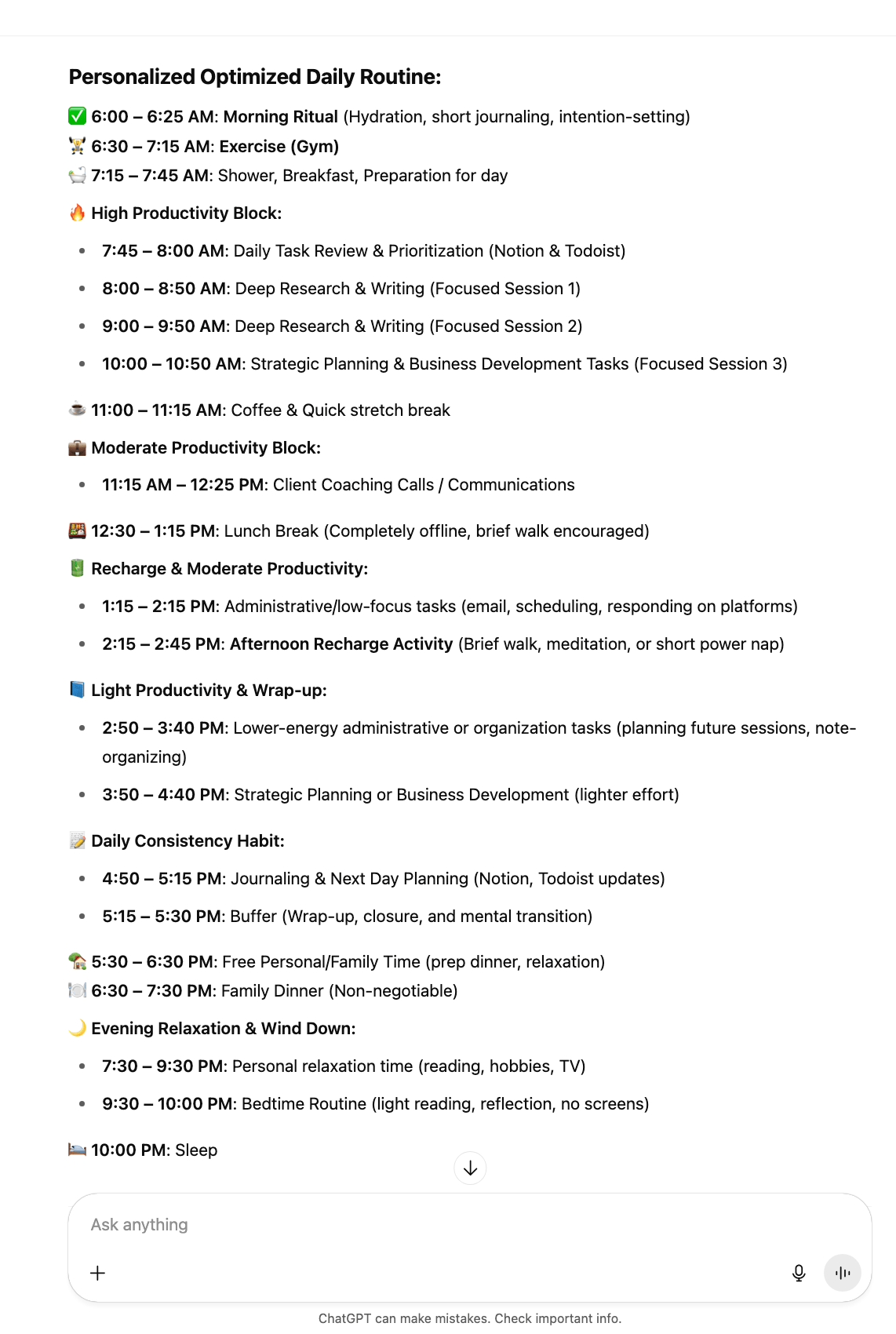
As you can see, the list is deep and varied, even for a generalised schedule prompt. Imagine if you were hyper specific.
🛠️ AI Tool Spotlight: Motion – The Automated Scheduler 🎯
Imagine a personal assistant finely tuned to your productivity rhythms. Like a tiny little helper who knows your energy peaks better than your mum knows your favourite snacks.
Motion, your AI-powered scheduler will help you with:
Dynamic Calendar: Automatically rearranges tasks based on deadlines, priorities and energy cycles.
AI Edge: Suggests optimal task timings, enhancing cognitive efficiency and reducing decision fatigue.
Best For: Solopreneurs and creators needing smart structure without a rigid schedule.
Motion elegantly orchestrates your day like a high octane productivity conductor, smoothly directing task transitions throughout your day.
What You Learned Today: 🎓
✅ Aligning tasks with energy spikes boosts you productivity.
✅ An effective AI prompt for crafting a tailored daily routine.
✅ Strategies to create habits that prevent burnout.
✅ The advantage of structuring your day like a thoughtfully curated playlist.
✅ Motion, the AI scheduling copilot to help your day stay balanced.
Embrace this AI approach for sustainable impact, fewer distractions, more clarity and deeper satisfaction. It's time your schedule felt effortlessly powerful.
Here's to less busyness, more brilliance.
And Remember…
Your day isn’t meant to be a relentless grind.
Real productivity isn’t about how many tasks you cram in, but how effectively you direct your energy towards those tasks.
Chasing efficiency without understanding your energy patterns?
That’s a recipe for burnout.
Instead, sync your tasks to your natural rhythm, using AI tools as co-pilots.
Structure with flexibility.
Plan with awareness.
It’s not about controlling every minute, it’s about shaping your day thoughtfully and intentionally.
Less overwhelm. More impact.
That's not just organisation.
That's mastery.

📸 AI IMAGE GALLERY 📸
AI Art: Voyage to the Star Forest
A jungle adrift on a planet with no name, the leaves hum softly with chlorophyll flame. Vines bloom in silence, lit from within, each pulse a memory, each root a stim. We wander through galaxies woven in green, a forest of stars where no man has been.
Want to create these images yourself?
Go to Midjourney and plug this prompt into the editor. Once the image is generated you can use the new video feature to animate it.
Cosmic jungle, 8K, HDR; colossal hollow sphere dwarfing distant spiral galaxies, interior barren and lightless; macro cosmic panorama; timeless dusk; distant front; --ar 16:9 --v 7Poem and digital artworks created by Cedric The Ai Monk.
 Desert Scrub of Asteroid MP179 |  The Circular Jungle of Skrall |
 The Whispering Forest of Wynn |  The Pine Canopies of Tresha |

👊🏽 STAY WELL 👊🏽
 | And that’s a wrap on this week’s optimisation ritual. 🧬⚙️ You didn’t just read, you recalibrated the firmware of your mind. One breath, one scan, one AI cue at a time. If your morning routine now feels like it was designed by a wellness architect with a PhD in flow states, join us on Twitter @cedricchenefront or @wellwireddaily where performance meets poetic rituals in a scrollable sanctuary. |
Next scroll, we’re unpacking how AI is becoming your subconscious co-pilot, not just nudging your calendar, but influencing your cognition.
For now, close the loop and whisper:
“I don’t hustle harder—I harmonise smarter.”🌱
Cedric the AI Monk - Your guide in the silicon wilderness.
Ps. Well Wired is Created by Humans, Constructed With AI 👱🤖
🤣 AI MEME OF THE DAY 🤣
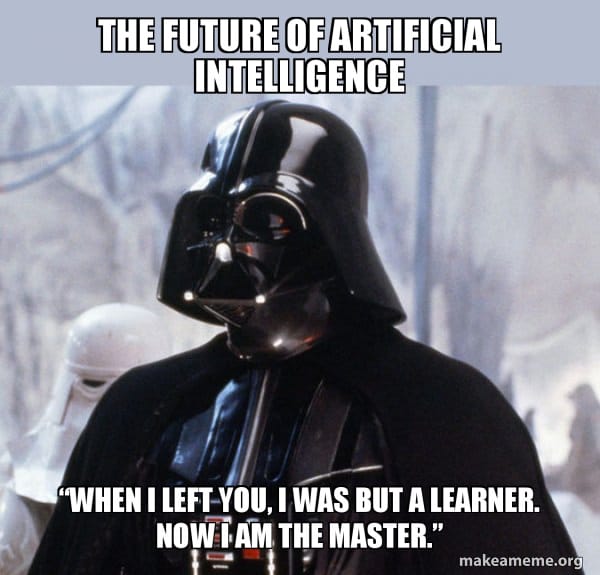
Start Wars meme of Darth Vader

Disclaimer: None of the content in this newsletter is medical or mental health advice. The content of this newsletter is strictly for information purposes only. The information and eLearning courses provided by Well Wired are not designed as a treatment for individuals experiencing a medical or mental health condition. Nothing in this newsletter should be viewed as a substitute for professional advice (including, without limitation, medical or mental health advice). Well Wired has to the best of its knowledge and belief provided information that it considers accurate, but makes no representation and takes no responsibility as to the accuracy or completeness of any information in this newsletter. Well Wired disclaims to the maximum extent permissible by law any liability for any loss or damage however caused, arising as a result of any user relying on the information in this newsletter.

